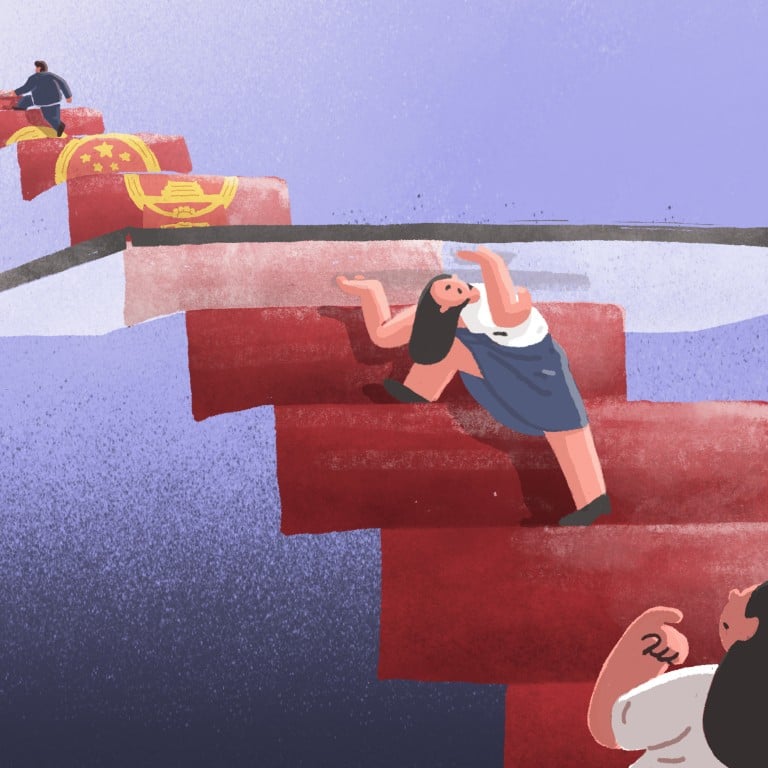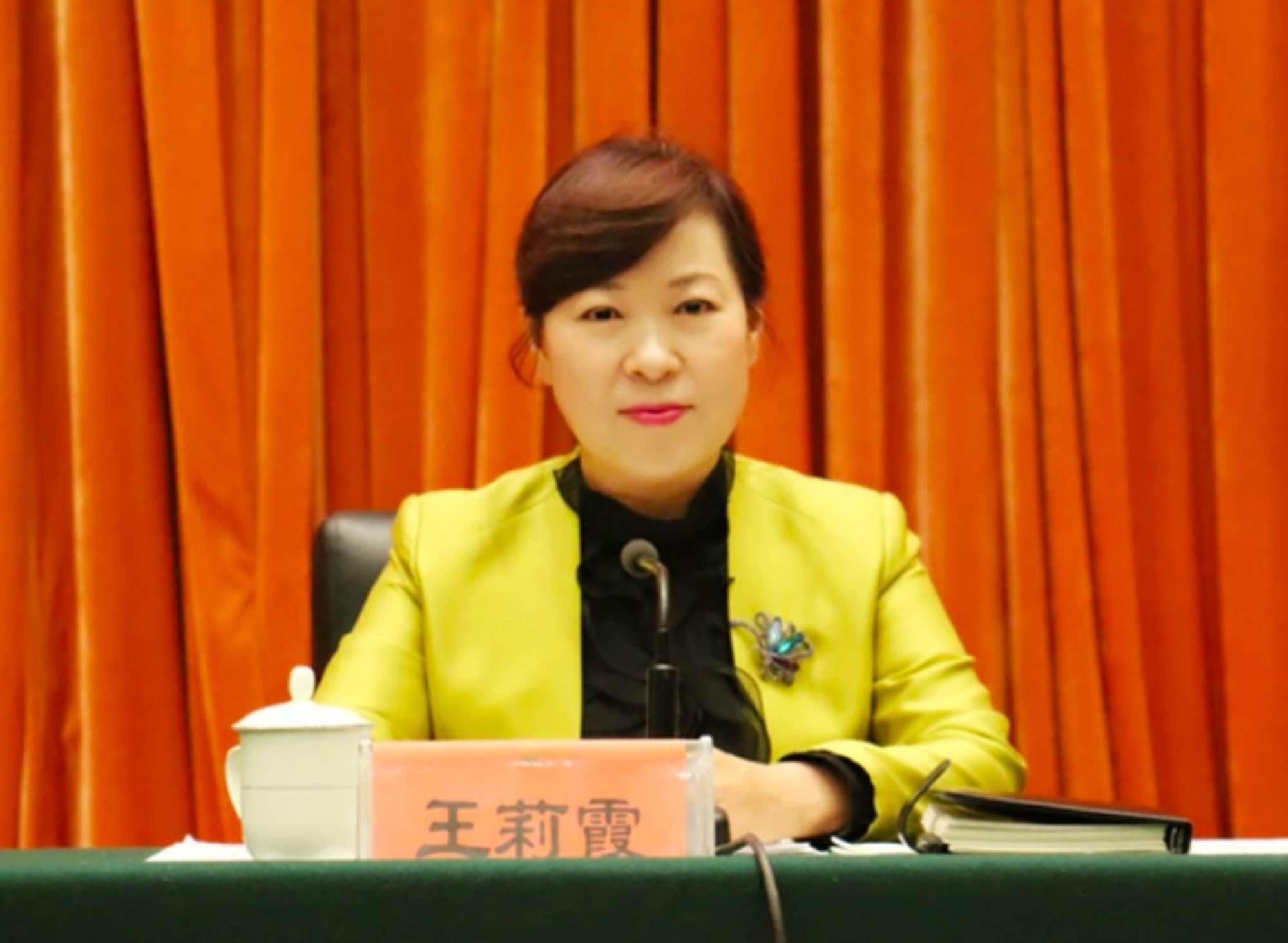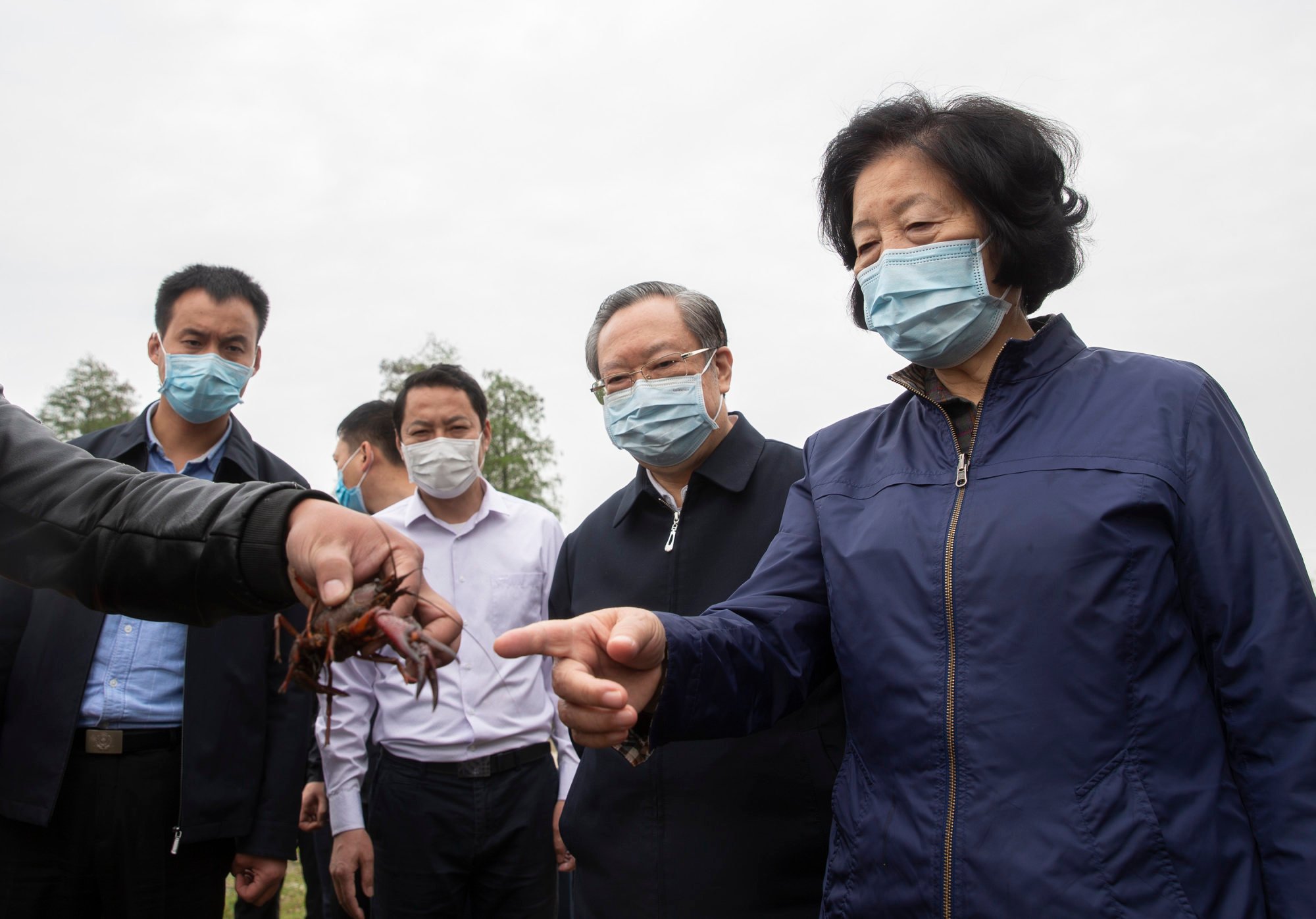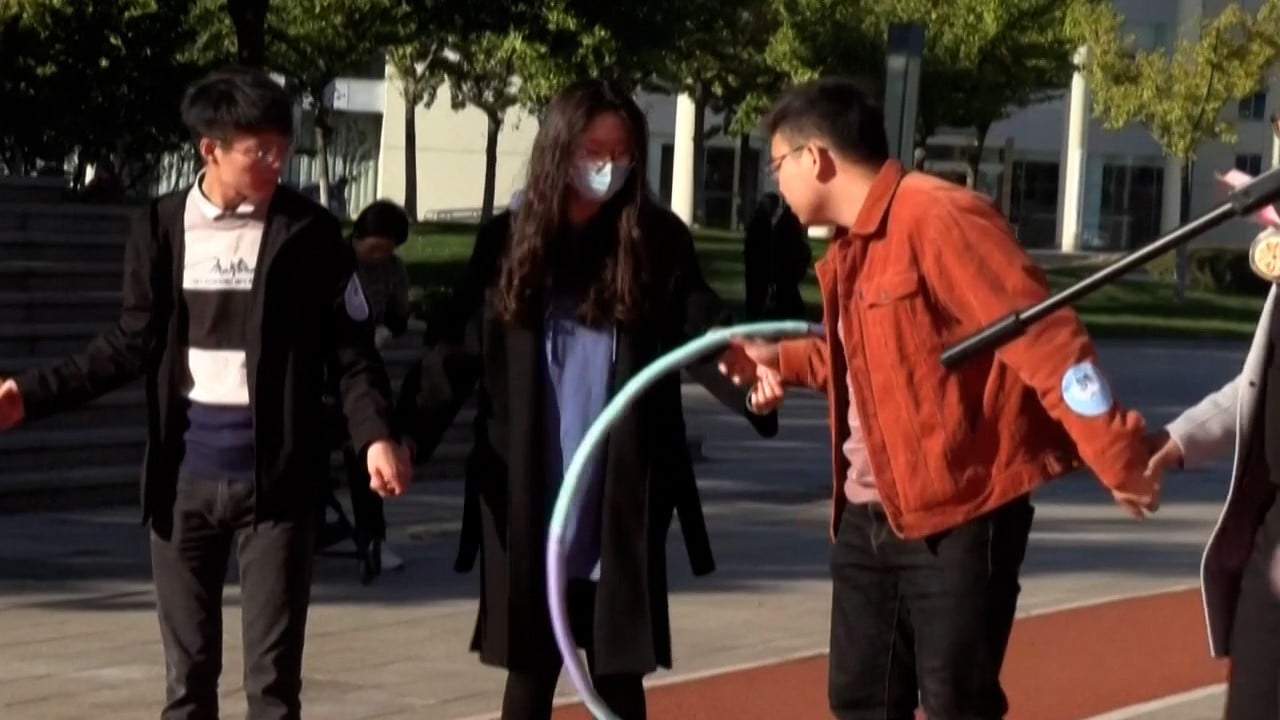
Why are women unlikely to win promotion race at China’s Communist Party congress?
- Female cadres tend to rise through gender pathways in areas such as education and civil affairs, and in mass organisations
- But they’re rarely assigned to more high-profile portfolios such as economics, finance, industry and technology
The rarity of female state leaders in China often sees them characterised as mythical creatures – “phoenix feather and unicorn horns” in Chinese idiom.
But the boys’ club of Chinese elite politics means very few women hold real power. For those who do make it, the path is likely to be long and tortuous as they overcome bureaucratic hurdles and gender stigmas.
China’s bride prices keep rising despite bid to end ownership of women’s bodies
“If I had a young niece in China who wanted a political career, I would suggest to her to start early, get as many university degrees as possible, preferably a PhD,” Minglu Chen, a senior lecturer at the University of Sydney’s China Studies Centre, said in a lecture outlining the traits shared by female cadres.
“She should join the Communist Party instead of a minor political party. She is probably going to benefit from a leadership position in the youth league.”
In reality, it takes a lot more than ticking those boxes for women to rise to the top. Analysts said they must find their way through a career maze and overcome the motherhood penalty of lower pay and less responsibility when they rejoin the workforce after giving birth. Being the daughter of a former high-ranking official also helps in terms of building a political network – something that female politicians often lack.
Ultimately, however, the preferences of top leaders decide how far a female cadre’s political career can go.
According to government statistics, party and central government organs employed more than 1.9 million female cadres in 2017, which was 1.6 per cent more than in 2015 and 26.5 per cent of the total.
In 2017, 52.4 per cent of the new civil service jobs in organs and institutions directly under the central government went to women, while 44 per cent of local government recruits were women. In 2018, female cadres held about 22 per cent of the positions in public sector institutions across the nation.
The data suggests a higher representation of women in grass-roots politics compared with the early years of reform and opening up in the 1980s. But the striking absence of women from elite politics points to a yawning gap between the decades-old party rhetoric about women holding up half the sky and the reality.
There are just 30 women among the 371 members of the party’s Central Committee, which elects the Politburo – China’s highest policymaking body – roughly in line with the historical average. There has never been a female member of the Politburo Standing Committee, the leadership’s highest decision-making body.
One of China’s highest-profile female state leaders was Wu Yi, a vice-mayor of Beijing who became deputy minister of foreign trade and economic cooperation in 1991. She was appointed to the Politburo in 2002 and became a vice-premier the following year. Wu played a leading role in the negotiations that led to China joining the World Trade Organization in 2001, and as health minister from 2003 headed a national task force to combat severe acute respiratory syndrome.
Shen Yiqin, who oversees Guizhou province as the only female party secretary among the 31 regional party bosses, is tipped by observers to be a front-runner for Sun’s seat in the new Politburo to be elected at the congress.

To facilitate greater political participation by women after the World Congress on Women in 1995, China began to roll out a gender quota requiring the appointment of “at least one female cadre” at various levels of administration.
In a 2000 directive, the party’s Central Organisation Department required provincial-level party organs to ensure that at least 10 per cent of their cadres were women, with the ratios set at 15 per cent for city-level organs and 20 per cent for those at the county level.

But scholars attempting to plot female cadres’ promotion patterns face the limitation of an insignificant sample size. The higher up the ranks, the smaller the pool.
Fengming Lu, who teaches Chinese politics at the Australian National University, said the gender quota remained the most decisive factor for making it to the top, often taking effect 15 to 20 years before a female cadre reached her highest office.
“Once the quota has been filled [in each department], we rarely see additional efforts made to promote more female cadres,” he said, adding that women were less likely to be considered for first-in-command positions than their male counterparts.
In 2001, the party required administrations of education, science, culture, health, sport, family planning, civil affairs, justice, labour and social welfare to make the appointment of female cadres a priority. But analysts said that the practice deprived women of the vital political training and networks required for the top jobs as they rarely got assigned to important portfolios such as economics, finance, industry and technology.
Hanzhang Liu, an assistant professor of political studies at Pitzer College in the United States, said field study in China had shown her that politically ambitious female cadres tended to steer clear of the gender pathways and mass organisations to avoid being sidelined from the get-go.
Who can fill the shoes of China’s Iron Lady Sun Chunlan on Politburo?
“To them, landing these positions is like hitting a career tomb,” Liu said. “If women aren’t put in positions in the first place to show they have got what it takes to steer economic development, a key cadre performance indicator, it’s hard to talk about future career advancement.”
Chen’s research has debunked the long-standing trope that female cadres selected for promotion are “innocent young girls” – wu zhi shao nu in Chinese – which refers to a lack of party affiliation, being an intellectual, and coming from an ethnic minority background.
When examining the résumés of provincial officials, Chen found that almost no female cadres were “innocent young girls”, with their appointments largely based on the same credentials as those male cadres in terms of age, education, party membership and experience.
Highly educated female cadres who were members of the Han ethnic majority and party members with mainstream credentials were more likely to get ahead. Comparing their résumés with their male colleagues, Chen noted that mass organisations provided a more promising career pathway for female cadres.

Of a pool of 109 female provincial leaders in 2013 and 2018, which included governors, deputy governors and provincial party standing committee members, 17 – or 15.6 per cent – had worked in the women’s federation, according to Chen’s data.
She also found that 31.2 per cent of female provincial leaders had youth league leadership experience, compared with 18.4 per cent of their male counterparts. Chen said that could be the result of a small talent pool limiting the supply of female cadres with wide-ranging administrative backgrounds.
China has very few women in power despite a commitment to gender equality
Chen also noted that fewer women cadres could make it to the top because such roles were often reserved for leaders who had held managerial roles at state-owned enterprises, ministries and regional governments, positions for which women were often bypassed.
In a 2020 study analysing promotion patterns of female cadres at the prefecture and department levels, Professor Lu Fang of the China University of Political Science and Law’s school of political science and public administration found that the female leaders who eventually made it to senior leadership shared one thing in common: an accelerated pathway in their career formation years.
“Female cadres must pass through a winding and multilayered maze before they can reach the tip of the [power] pyramid,” she wrote, with various obstacles along their way including the motherhood penalty which sidelined careers and bureaucratic difficulties such as the gender quota.
Her data covered 230 women and 3,827 men who served as the party bosses of cities, districts and counties, all provincial party standing committee members, provincial party chiefs and governors and the non-military members of the Central Committee between 2000 to 2015.
She found that the female cadres captured in her data set tended to arrive at the deputy-division-head level at an average age of 29.38, 10 years younger than other female cadres.
The rankings of Chinese cadres climb through section head to division head, bureau director, provincial level, subnational leader, and national leader.
Gender equality in China
“In other words, when other women are still working hard to reach the deputy-division-head level, the female cadres in this database are already preparing for promotions at the bureau-director level,” Lu Fang wrote.
That “career expressway” ensured those female cadres maintained an age advantage and a shorter waiting time for promotion than other women.
“This 10-year difference falls in a critical period of a woman’s childbearing age,” Lu Fang wrote. “The motherhood penalty remains a common human resources cost for women in lower-ranking positions. The female cadres in this database generally have avoided this sticky-floor effect.”
She also found that about 41.5 per cent of the female cadres worked in leadership positions at academic institutions and mass organisations before they were elevated to division heads and bureau directors, mostly at party committees, governments and people’s congresses and political consultative conferences.
“Even at government departments, most women cadres would be assigned to oversee education, science, culture and health, but rarely at transport, industrial and economic departments,” she wrote.
Bo Zhiyue, a leading expert in Chinese elite politics based in New Zealand, said that without a comprehensive training and rules-based system to nurture and select female political talent, the political destiny of female cadres would ultimately depend on the preferences of senior leaders.
Grim video of chained mother stirs memories of China’s ‘missing girls’
“It’s entirely based on factional ties rather than individual merits,” Bo said. “This has created a very helpless situation because it’s a selection, not an election.”
Shen’s rise to Guizhou party boss could be closely related to her ties with Li Zhanshu, the chairman of the National People’s Congress and the third most senior member of the Politburo Standing Committee, Fengming Lu said.
“Her résumé suggests that Li Zhanshu may have been influential to her rise as she was promoted to executive deputy governor from provincial propaganda chief when Li was the Guizhou provincial party chief,” he said.
While it remains unclear whether Sun’s place in the Politburo will be filled by a woman next month, analysts do not expect any drastic improvement in female representation in Chinese politics in the near future.
“It is not enough to have only one female leader in every province and this has to change,” Chen said. “But the Communist Party is a very masculine institution and this is an institutional issue.
“Unfortunately, any kind of significant and meaningful change would have to come from the party itself.”



